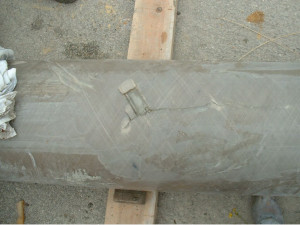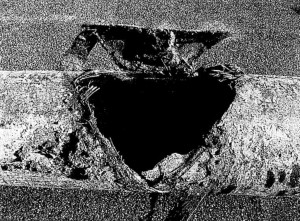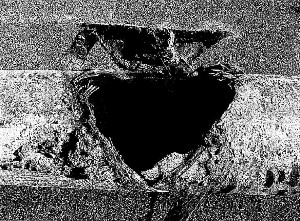Acid water stemming from the manufacturing of dyes and pigments was partially channelled to a neutralisation facility located 18 km from a chemical plant. Between 5th and 11th August, a succession of leaks was observed, especially over the first 2 km of the pipeline (SVR material, NPS: 400), which had undergone testing 20 days prior. These defects were primarily noticed adjacent to pipe elbows and during directional changes, while the pressure never exceeded 5 bar (vs. a 10-bar design pressure) in a diluted sulphuric acid medium (concentration < 15 g/l) and with a temperature below 35°C (temperature allowed for SVR tubes = 50°C). The pipeline was shut down on 11th August due to overall flawed operations. Deterioration of the infrastructure was due to a corrosion mechanism occurring in an acid-stressed environment. The subsequent analyses revealed: tube out-of-roundness resulting from insufficient soil compaction, drastic pressure drops during pumping shutdown caused by inappropriate settings on the surge chamber installed at the beginning of the line (pre-inflated to 1.7 bar instead of the recommended 0.5 bar), and an inadequate number of vents. Studies had indicated that for significant strain levels, composite material pipelines displayed failure times in the tens of hours in the event of corrosion in a stressed environment. An additional Prefecture order enacted on 8th March 2004 ultimately requested placing a new transport pipeline in service prior to 30th June 2006: it would follow the same alignment as the former line and be built with high-density polyethylene (HDPE) instead of SVR. The cost of this replacement operation was evaluated at more than €5.5 million.
Download the detailed report in .pdf format (149 Kb)






